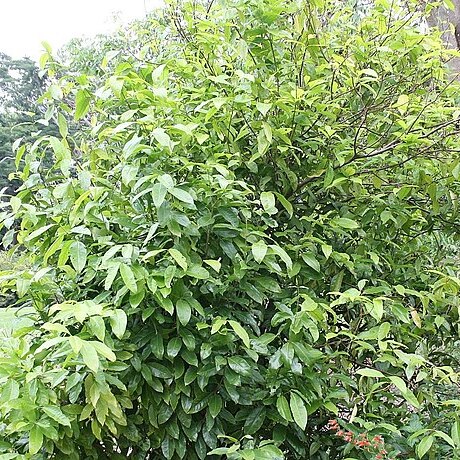Shrub, sometimes a tree, up to 8 m. Branches and branchlets glabrous and dark-brown. Leaves chartaceous, oblong-lanceolate, oblanceolate, or ovate-oblong, 11.5-33 by 3.5-14 cm; base cuneate, rounded; apex acuminate; margins slightly recurved; nerves (8-)13-22 pairs, distinct and elevated on both surfaces, curving and ascending towards the margin, veins and veinlets slightly reticulate; petiole 1.5 cm, slightly winged. Inflorescences terminal and/or axillary at the terminal node, sometimes in the axils of the upper two nodes of the branch, solitary, very rarely more than one in the same axil. Peduncle up to 3½ cm; bracts small, lanceolate, 3 mm long, densely decussate at the basal part, persistent. Involucral bracts 4, caducous after anthesis, rarely persistent, oblong, obovate-oblong, 15 by 8 mm, obtuse at the apex, apiculate or obtuse, densely puberulous towards the upper part on both surfaces. Flowers (2-)3—4.5 cm long. Floral tube pubescent outside, villose at the lower half or lower 2/3 inside. Calyx lobes 9 mm long. Stamens and style c. 10 mm exserted beyond the tube. Disk cup-shaped, sometimes consisting of 6 or 7 free lobes (PNH 33763). Ovary usually hairy at the apex or on one side of the ovary, usually 2-celled, sometimes 1-celled by abortion. Fruits usually 1-seeded, ovate, gradually narrowed towards the apex, acute at the base, 1½-3 by 1.25-1.75 cm. Seed ellipsoid, planoconvex, 10 by 8 mm.
More
An evergreen sprawling shrub or small tree. It grows about 2-8 m high. The leaves are sword shaped and 15-33 cm long by 4-14 cm wide. They are glossy. The flowers are white and in dense heads. The flowers are 2-4 cm long. The fruit are oval and red. They are 2-3 cm long by 1.5 cm wide. They have one seed. It is narrowly oval and 10 mm long by 8 mm wide.
A tropical plant. It suits seasonally moist and dry climates. It grows in lowland rainforests and up to 1,140 m above sea level. It needs a fertile, well-drained soil. It can grow in full sun. It suits hardiness zones 10-12.
More
In rain-forest at low and medium altitudes, one collection (NGF 8511) at 1140 m (Western Highlands, New Guinea).


